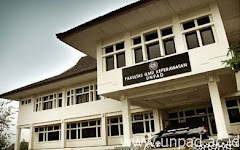Definition of Anxiety
The word anxiety stems from the Latin word anxietas, which means “to vex or trouble.” Anxiety represents uneasiness and is an integral aspect of human nature, because it plays a major role in adaptation and homeostasis. It often extends beyond adaptive importance for the individual. Anxiety is a psychological and physiological state characterized by cognitive, somatic, emotional and behavioral components. These components combine to create an unpleasant feeling that is typically associated with uneasiness, fear or worry.
Anxiety is a generalized mood condition that occurs without an identifiable triggering stimulus. As such, it is distinguished from fear, which occurs in the presence of an observed threat. Additionally, fear is related to the specific behaviors of escape and avoidance, whereas anxiety is the result of threats that are perceived to be uncontrollable or unavoidable.
Another view is that anxiety is "a future-oriented mood state in which one is ready or prepared to attempt to cope with upcoming negative events" suggesting that it is a distinction between future vs. present dangers that divides anxiety and fear.
Anxiety is considered to be a normal reaction to stress. It may help a person to deal with a difficult situation, for example at work or at school, by prompting one to cope with it. When anxiety becomes excessive, it may fall under the classification of anxiety disorder.
The Effect of Anxiety
In description’s part, we found that anxiety has impact to a psychological and physiological state. Anxiety generates an array of autonomic, behavioral, motor, and cognitive responses. Autonomic or neurobiological responses include increased respiration, tachycardia, paresthesias, diaphoresis and dizziness. Behavioral responses include rituals, avoidance, help seeking, and increased dependency. Motor reaction often presents as muscle tension, tremors, stuttering and restlessness. Cognitive or Psychological, symptoms include a sense of doom or powerlessness, vigilance, rumination, helplessness, dissociation, distortions, and confusion.
We can see other effect of anxiety in other literature like Wikipedia. Physical effects of anxiety may include heart palpitations, fatigue, nausea, chest pain, shortness of breath, stomach aches, or headaches. Physically, the body prepares the organism to deal with a threat. Blood pressure and heart rate are increased, sweating is increased, blood-flow to the major muscle groups is increased, and immune and digestive system functions are inhibited (the fight or flight response). External signs of anxiety may include pale skin, sweating, trembling, and pupillary dilation.
Anxiety does not only consist of physical effects, there are many emotional ones as well. They include "feelings of apprehension or dread, trouble concentrating, feeling tense or jumpy, anticipating the worst, irritability, restlessness, watching (and waiting) for signs (and occurrences) or danger, and, feeling like your mind's gone blank "as well as " nightmares/bad dreams, obsessions about sensations, dejavu, a trapped in your mind feeling, and feeling like everything is scary."

Anxiety, Fear, and Panic Attacks
Sometimes people think that anxiety and fear has a same sign and symptoms, but it’s different. Fear is a diffuse, anticipatory reaction to danger when there is no real danger. The continuum of anxiety ranges from a mild form that produces little effect to a severe form that disrupts homeostasis by activating maladaptive responses, such as avoidance or phobias (Rosenbaum & Gelenberg, 1991) Anxiety may be thought of as protective, innate form of communication that the body uses to mobilize its coping resources to maintain homeostasis, and failure to respond adaptively further compromises homeostasis (Basch, 1988)
Someone suffering from anxiety might also experience it as a sense of dread or panic. Although panic attacks are not experienced by every anxiety sufferer, they are a common symptom. Panic attacks usually come without warning, and although the fear is generally irrational, the perception of danger is very real. A person experiencing a panic attack will often feel as if he or she is about to die or pass out. Panic attacks may be confused with heart attacks therefore only a doctor can be the only right person to differentiate between panic attacks or the heart attack.
Refences:
White, F., Hayes, B., & Livesey, D. (2005). Developmental Psychology: From Infancy to Adulthood. NSW: Pearson Education Australia.
Deborah Antai. (1994). The Client Experiencing Anxiety. 191 – 208
http://www.nlm.nih.gov/medlineplus/ency/images/ency/fullsize/9951.jpg
http://www.medicinenet.com/anxiety/page2.htm
http://en.wikipedia.org/wiki/Anxiety
http://www.anxietycures.co.uk/?cat=10


